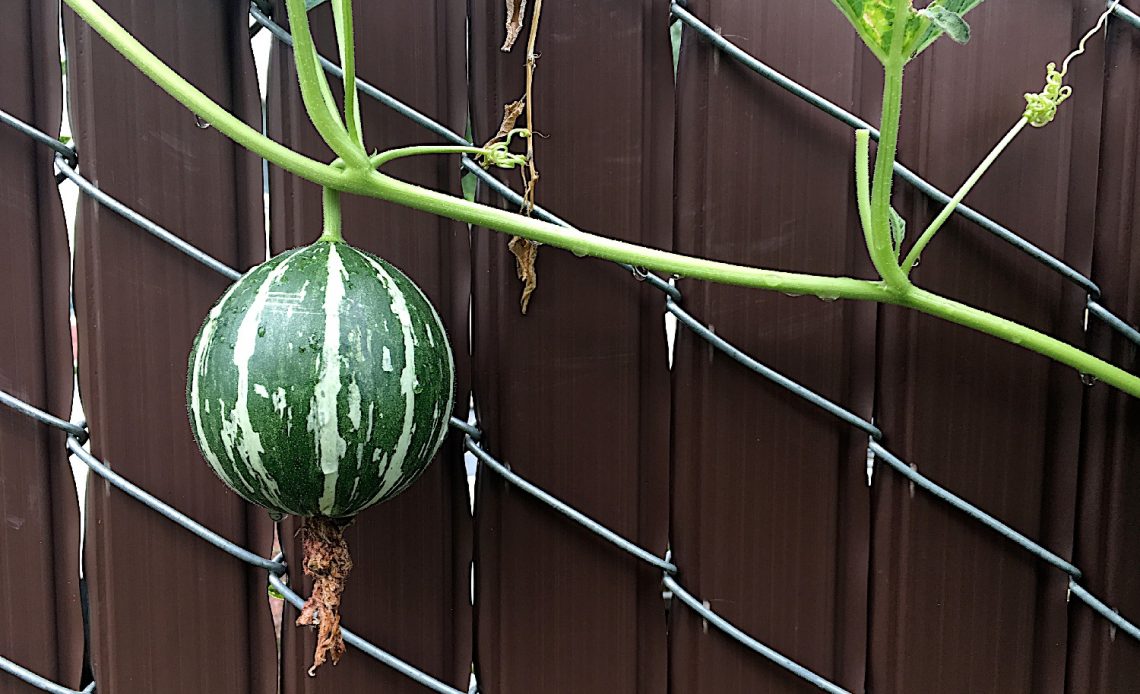

We’re here to help! Wild Yards is a completely free website that is 100% dedicated to helping you create a wildlife-friendly, sustainable yard. Read more
WildYards is reader-supported. When you buy a product through a link on our site, we may earn a comission. Every product is independently selected by our (obsessive) editors and our reviews are unbiased and objective. Read more about our mission or our privacy policy.
If you have a tiny backyard, there’s no denying that your growing space is severely limited. You might think you’re restricted to smaller garden plants, like strawberries, tomatoes, dwarf fruit trees, and potted herbs. But just because you have a little garden doesn’t mean you can’t grow larger fruits and vegetables. You just have to get creative about it. Want to know how to grow watermelon in a small space? We’re here to help you get started.
You can grow watermelon plants in raised beds by training the vines to grow up trellises. Watermelons are fast-growing plants that can quickly take over an arbor, making good use of limited yard space. Nailing lattice up along a sunny exterior wall of your home provides watermelons growing in buckets below with plenty of room to spread out.
How big do watermelon plants get, anyway?
Watermelons are one of the largest garden plants. They have big lobed leaves that are bright green. Stems are grooved and covered in prickly hairs. These plants are vines, so when left to grow wild in your garden, they’ll sprawl out all over the ground looking for something to latch onto. If they’re not kept in check, they can wind up smothering neighboring plants.
Most watermelon plants grow 15 to 24 inches tall with vines reaching up to 8 feet in length — although some plants grow much longer than that at 18 feet or more. Watermelon vines can be pruned to prevent them from getting out of control. Pruning has the added benefit of encouraging fruit production.
Individual watermelon plants can take up 20 square feet all on their own. Of course, if you have a tiny garden, giving each watermelon that much room to grow is out of the question. Fortunately, providing watermelons with their ideal sun, soil, and water requirements can make them more tolerant of growing in a restricted area.
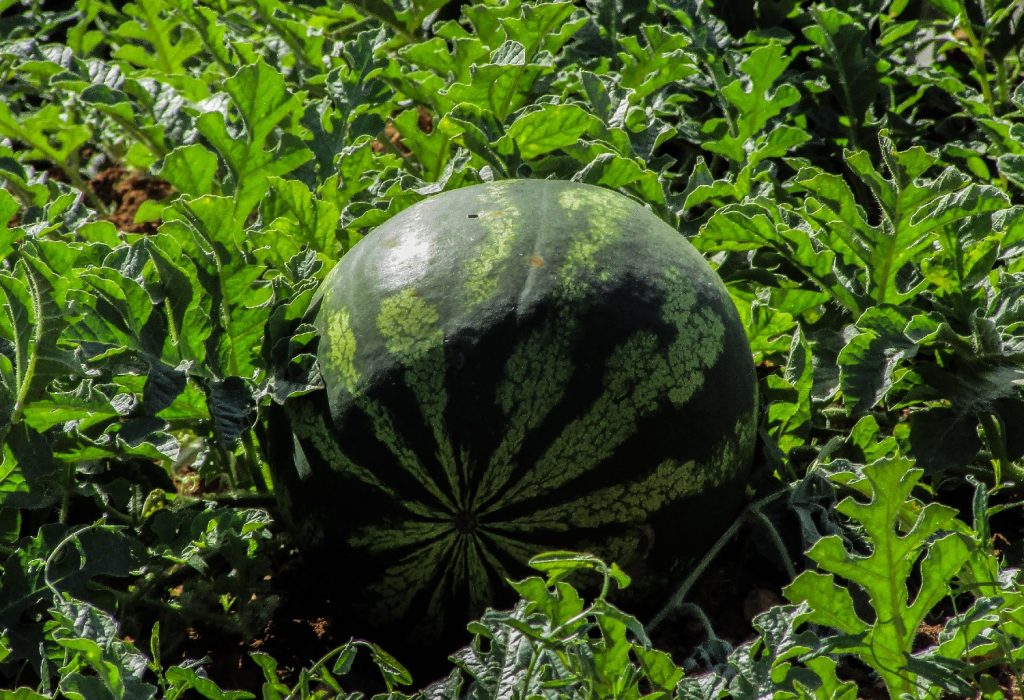
What are the watermelon’s growing requirements?
If there’s one thing watermelons need, it’s deep, loose soil. The roots of these plants are quite invasive. They have to be to collect the nutrients and water they need to produce their giant fruits. So if you’re planning on growing watermelons, regardless of the size of your garden, be sure to provide them with plenty of nutrient-rich, neutral to slightly acidic sandy loam soil.
Watermelons don’t perform well in cooler climates. They love the heat. They grow best in hot, humid climates, and can tolerate full sun very well. However, prolonged exposure to extreme temperatures causes the watermelon’s soil to dry out too fast. It’s important to water your watermelons deeply once or twice a week with smaller daily waterings in between. You can use hay, sawdust, or storebought mulch to prevent the moisture in the soil from evaporating so quickly.
What are the best watermelon varieties to grow in a small space?
Miniature watermelons — called “personal watermelons” because they’re single-serving sized — work best for small gardens. The ‘Blacktail Mountain’ cultivar is one of the sweetest watermelons on the market today, miniature or full-sized. These watermelons have a solid dark green rind and are ready to be harvested in just 60 to 75 days.
‘Mini Love’ and ‘Sugar Baby’ personal watermelons produce the same bright green rinds and sweet, juicy red flesh as traditional watermelons, but they only grow about half the size, so they’re perfect for growing up small trellises. The ‘Little Baby Flower’ personal watermelon only weighs 2 to 4 pounds at maturity, making it a good choice for potted watermelon gardens.
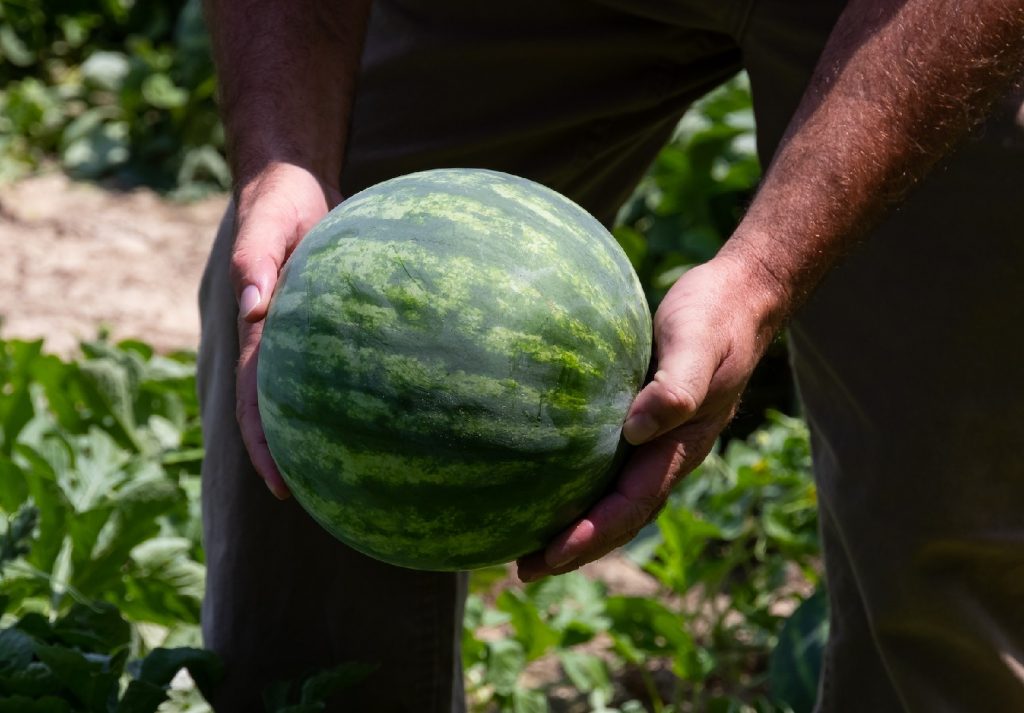
How can you grow watermelons in raised beds with trellises?
Would you believe that a single 4-foot-by-4-foot raised bed can house 2 or 3 watermelon plants? It’s true. Just be sure to train the vines to grow up a trellis, and you can grow multiple watermelons in a small space.
Start by mounding the soil toward the center of the bed. Watermelons grow on hills because they allow for better drainage and help keep the soil warm so the seeds can germinate. Sow 2 or 3 seeds roughly a foot apart. Once they sprout, train new vines to latch onto the trellis.
Allow the vines to grow as long as possible. If you haven’t got much vertical room, you’ll have to trim your watermelons back regularly. But that’s okay because pruning foliage allows the plants to focus more of their energy on fruit production.
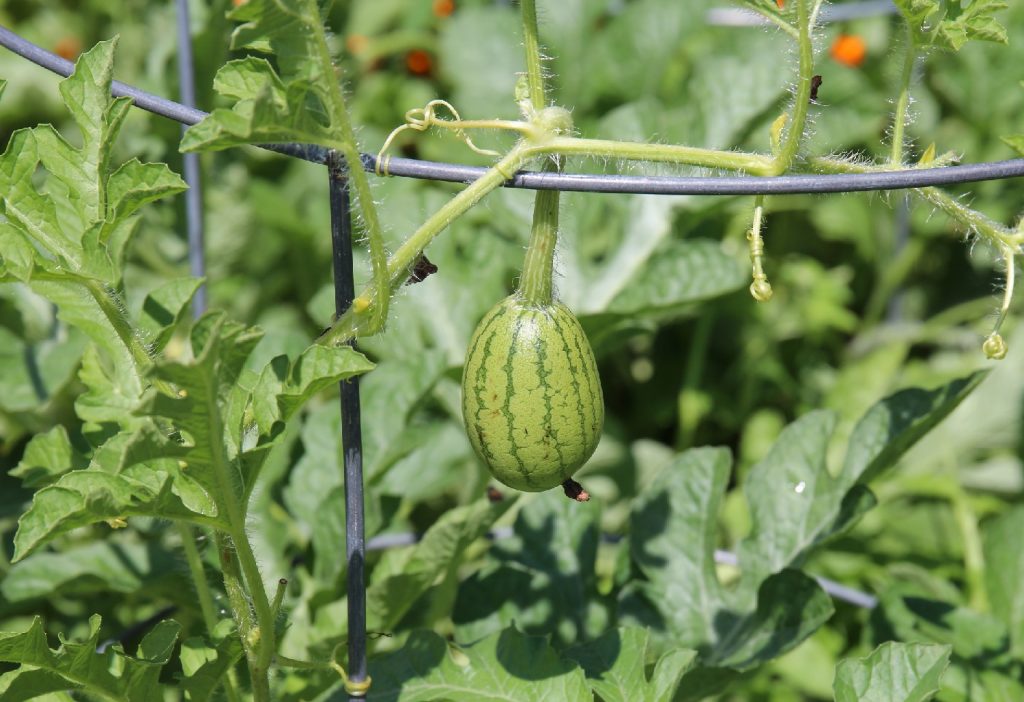
How can you grow watermelons in large pots?
If you haven’t got raised beds, and all you have room for on your patios is a couple of large pots, you can still use these to grow watermelons. When using pots to grow watermelons, avoid planting more than one watermelon per pot. Choose pots that are 18 or more inches deep and that have plenty of drainage holes in the bottom.
Stick tomato cages into the pots to provide your watermelons with a quick and easy trellis to grow onto. If you’d prefer to use something sturdier, purchase a spool of 4-foot or 6-foot-tall galvanized garden fencing to make your own trellises. Choose wire that’s sturdy enough to support the weight of your watermelons, but is still easy enough to handle — 16 gauge should do the trick.
Simply cut panels of the wire to the same circumference as the pots. Trim the bottommost horizontal wire of the fence panel to free up the vertical wires, and use them as stakes to hold the homemade trellises in place.
How can you train your watermelons to grow along an arbor?
Turn empty arbors into eye-catching focal points by training your watermelon vines to trail along them. Watermelons quickly overtake trellises, giving your yard some additional shade during the warmer months. The wider your arbors, the more watermelon plants you can grow.
Plant watermelons on either side of your arbor, training the vines to grow up and over so the tops meet in the middle. Arbors allow watermelons to get closer to the sun where their leaves can bask in the light. If your yard receives only partial sunlight, growing your watermelons on an arbor helps keep the foliage warm and, in many cases, can improve production.
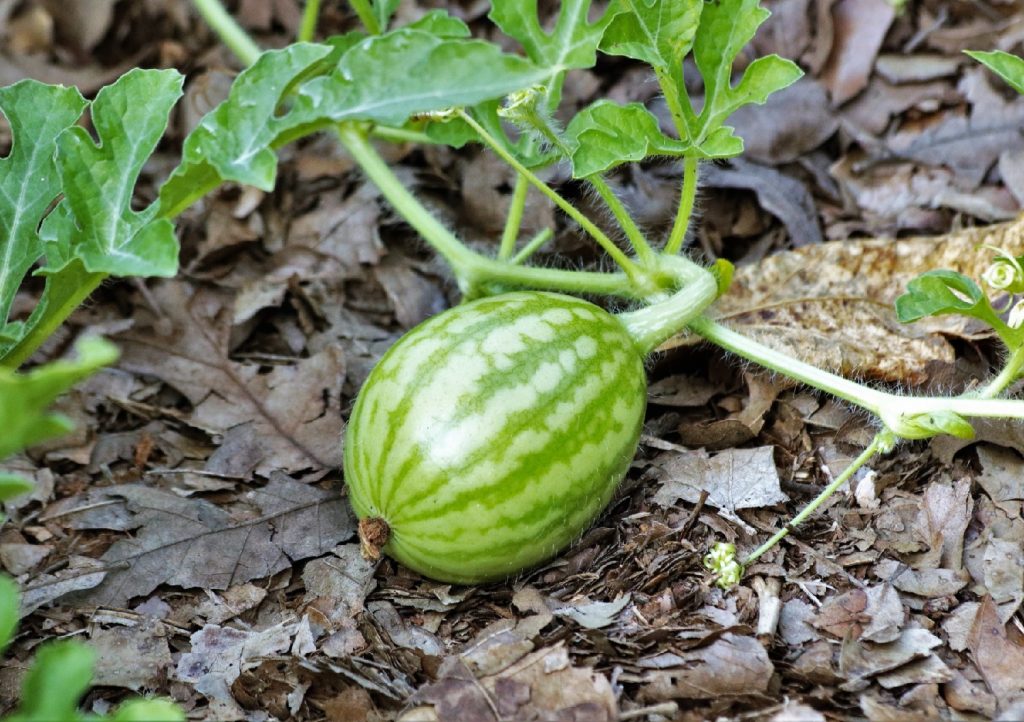
What’s the best way to utilize your yard space for watermelons?
Rewilding lawn is all the rage these days. Ditching lush green grass to turn your yard space into a fruitful garden is just as popular. So consider ripping out the ornamental landscaping growing along the sides of your house and installing lattice for vining fruits and vegetables to use as a trellis instead.
For best results, install the lattice on the sunniest side of your home (the east or west side, in most cases). Then, place watermelon plants along the wall at 4-foot intervals if the plants are grown in the ground and 2-foot intervals if the plants are growing in individual buckets.
If you would rather not nail lattice to the side of your home, build wire teepees for watermelons to climb. Use that spool of garden wire you purchased earlier to build cone or pyramid-shaped trellises and work the vines around them as they grow. This will help keep the foliage up and out of the way, making the watermelon plants more manageable.
How can you support melons as the watermelon vines grow?
If you find you need to help your watermelon vines cling to their trellises, use garden twine to tie the stems up until they grab on. Overall, teaching watermelons to grow up arbors and wire trellises is easy. They’re vines, it’s their nature to climb. But supporting the watermelons themselves to prevent them from breaking off the plants before they mature takes a little creativity.
Use stretchy fabric (old t-shirts, cheesecloth, pantyhose, etc.) to cradle the melons by tying them to the trellis for support. Cut a large swatch of fabric to create a hammock that will fit the melons as they grow. Be sure to include enough slack to tie the ends of the sling around the trellis to keep the melons from tearing off the plant. Be sure to inspect the melons regularly for signs of pests, who like to hide between the melons and the fabric.
Sturdy netting also works well for making watermelon slings. Netting allows for better air circulation around the melons, preventing humidity from encouraging rot and insect infestations (homemade insecticides can also be applied to ward off bugs). Use zip ties or string to tie your watermelons to their trellis when using netting.
More tips for growing healthy watermelons
If you grow your watermelons in raised beds or small pots, you can plant low-growing watermelon companion plants to help attract pollinators and act as a living mulch. Sweet clover and mint are good choices. And be sure to check your watermelon plants regularly. Deer love watermelons and will use their hooves to bust through the rinds to get to the sweet fruit within. Use homemade deer repellent to ward off these pesky foragers.
Don’t let your small backyard stand in the way of your dreams of homegrown watermelons. Through careful planning and strategic pruning, you can finally produce these large vining plants in your limited garden space.
